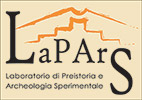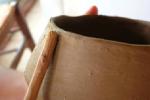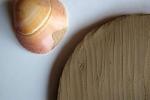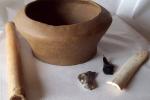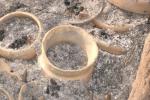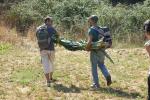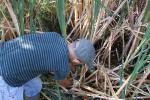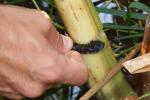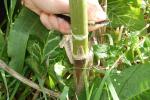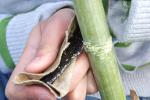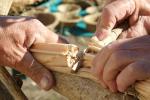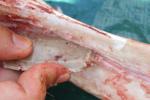Experimental Archaeology
Experimental archaeology is one of the primary tools for identifying and categorising tool marks left on ancient artefacts, that are often difficult to recognise, as well as indicating production processes of different objects and the tools employed in the transformation of various raw materials as well as for the reconstruction of working methods and procedures. Beyond making an important contribution to technical analysis, making it possible to verify through experimentation any formulated hypotheses and broadening the available pool of information, it is also widely used to analyse marks created through usage.
The reproduction of activities practiced in prehistory, carried out in as faithful a way as possible to the ancient conditions, makes it possible to create a comparison collection to be used in identifying and interpreting various marks on archaeological finds.
During the recent reconstruction of a prehistoric village and the various related craft activities involved, several experimental exercises were undertaken, which were inspired by technological observations conducted on the finds recovered from the site of Su Coddu (Selargius, Cagliari).
The experiments of splintering, especially using obsidian, and the experimental production of stone axes made it possible to categorise some of the marks created in the various phases of transformation.
In the field of pottery analysis, the reproduction of treatments for the finishing of surfaces has made it possible to verify some hypotheses on the necessary time, methods and instruments involved in production. The example of a Sub-Ozieri pottery pan, a "fossil-guide" vessel of the Early Eneolithic in Sardinia, proves emblematic, the characteristic external stripes of which were reproduced through experimentation and identified as a method such as rabotage. In an effort to identify and categorise some of the important variables of the firing phase, several experimental attempts were carried out in a shallow pit just below ground level.
With the intention of reproducing bone awls and points from sheep metapodials, the bones were first fractured, and the resulting blanks subsequently finished through scraping and abrasion. As far as the first phase was concerned, the objective was to identify the fracture planes caused by direct percussion, applied transversally, of blocks of the raw material in different degrees of dryness. The various marks caused by scraping and abrasion were indentified and categorised in relation to the variables taken into consideration (such as condition of the raw materials, type of stone tool utilised, etc).
